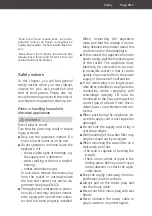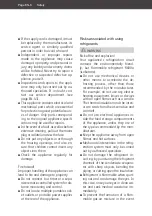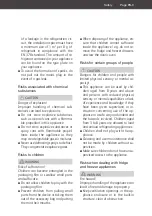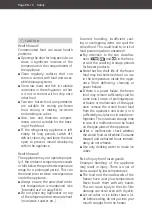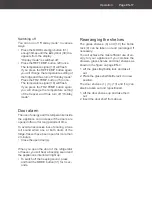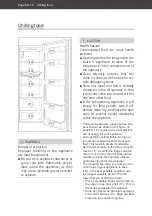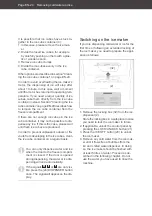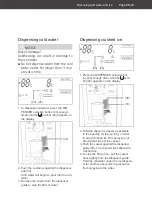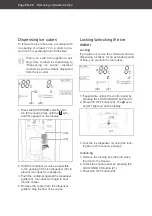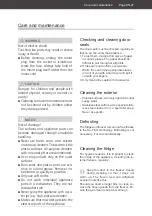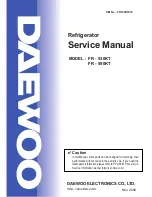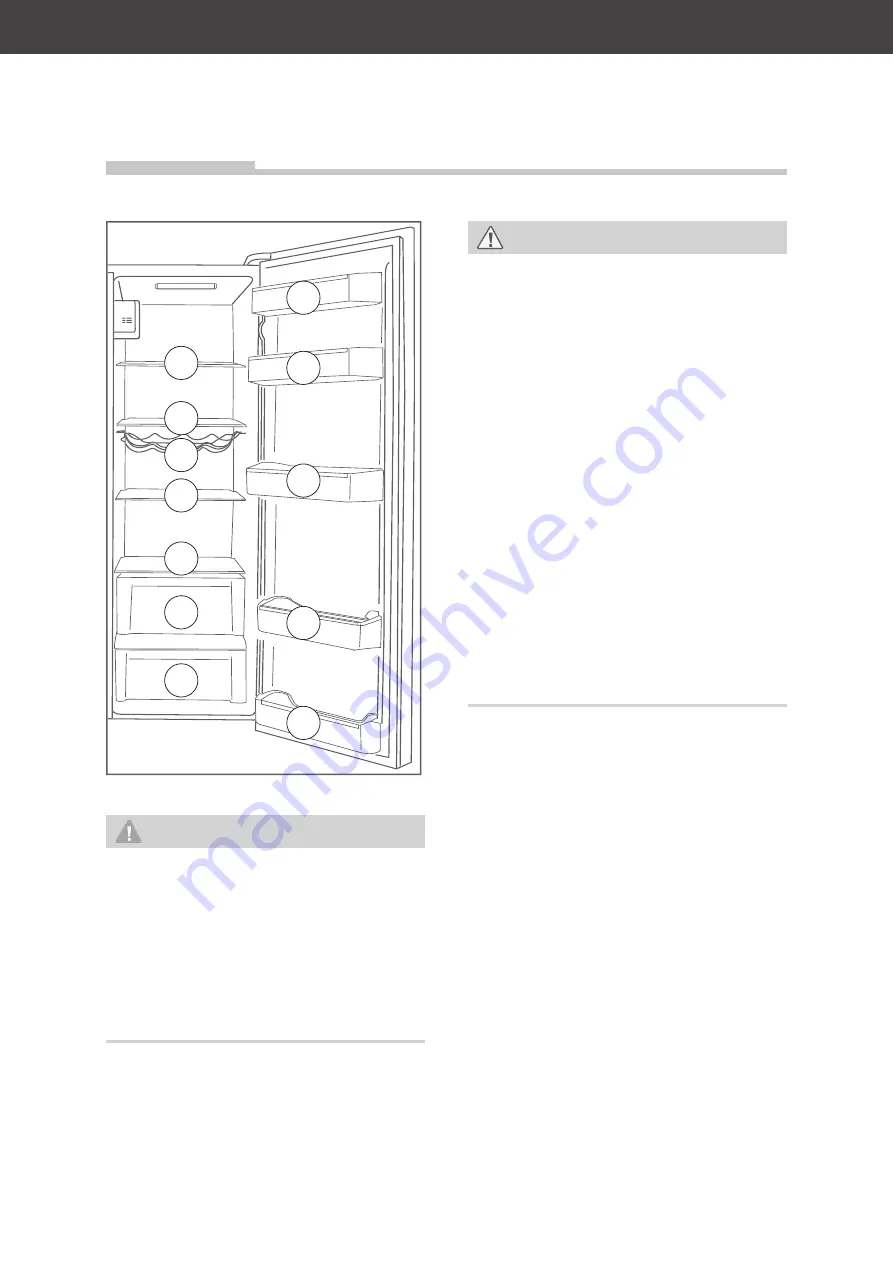
Chilling food
Page EN-18
ECO LED LIGHT
(10)
(10)
(10)
(10)
(11)
(12)
(13)
(13)
(13)
(14)
(14)
(9)
WARNING
Danger of explosion!
Improper handling of the appliance
can lead to explosions.
■
Do not store explosive substances or
spray cans with fl ammable propel-
lants inside the appliance, as they
may cause ignitable gas-air mixtures
to explode.
CAUTION
Health hazard!
Contaminated food can cause health
problems.
■
Opening the door for long periods can
cause a signifi cant increase of the
temperature in the compartments of
the appliance.
■
Clean regularly surfaces that can
come in contact with food and acces-
sible drainage systems.
■
Store raw meat and fi sh in suitable
containers in the refrigerator, so that
it does not come into contact with or
drip onto other food.
■
If the refrigerating appliance is left
empty for long periods, switch off,
defrost, clean, dry, and leave the door
open to prevent mould developing
within the appliance.
• Combine the drawers, glass shelves and
door shelves as shown in the figure on
page EN-18 to achieve the most efficient
use of energy for your appliance.
• A temperature setting that is too high or
too low can reduce the shelf life of your
food. This leads to greater food waste.
Set the temperature in the fridge compart-
ment to +6 °C and fill the fridge compart-
ment in such a way that the temperature
conditions inside are optimally utilised,
guaranteeing optimal food storage.
• The following tips show you how you can
store foods in your appliance to keep
them in the best possible condition over
the longest possible period. This will
mean that you avoid food waste:
– Place spreadable butter and cheese on
the upper large door shelf (13). This is
where the temperature is warmest.
– Store any preserves, glass jars and eggs
in the door shelves (13). Eggs are best
stored on the supplied egg tray.
Chilling food




